You have 0 product(s) in your cart.
Abyss Scuba Diving
Uncovering The Facts Of The Hammerhead Shark
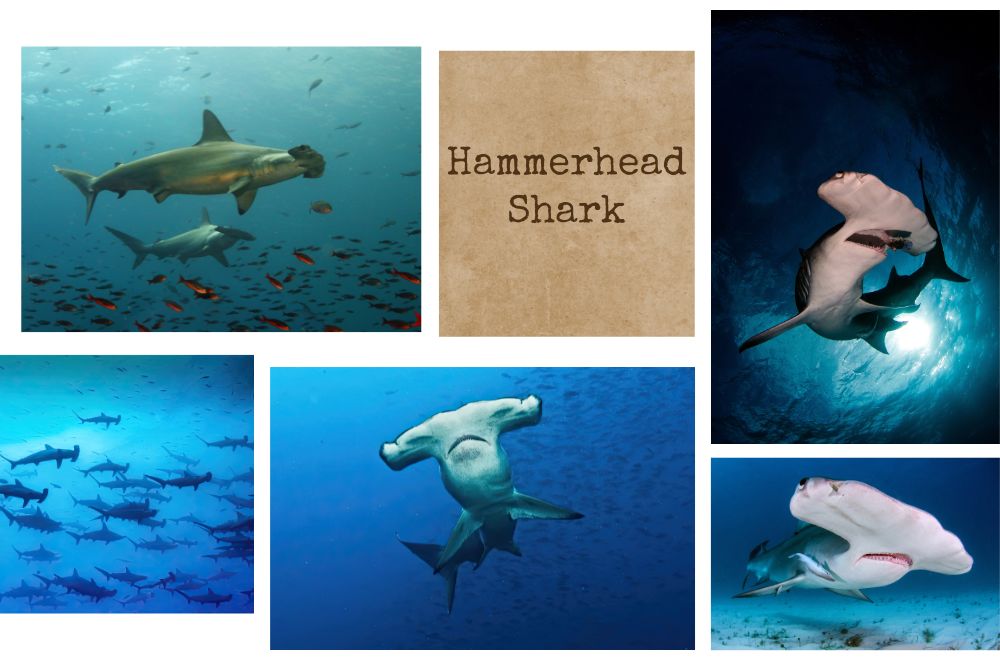
Uncovering the Facts of the Hammerhead Shark
Did you know that hammerhead sharks possess a unique head shape that not only sets them apart from other shark species but also provides them with incredible sensory advantages? In this fascinating journey through the world of hammerhead sharks, we will explore the mystery behind their oddly shaped heads, their life cycle, hunting techniques, various species, their interactions with humans, and their cultural significance.
Short Summary
-
Hammerhead sharks possess unique head shape and sensory organs that provide them with enhanced vision, depth perception and hunting capabilities.
-
Humans pose a greater threat to hammerhead sharks than vice versa due to overfishing for their fins, making conservation efforts essential.
-
Hammerhead Sharks have cultural significance in many communities around the world, which underscores the need for protection of these creatures from human threats.
The Unique Head Shape of Hammerheads
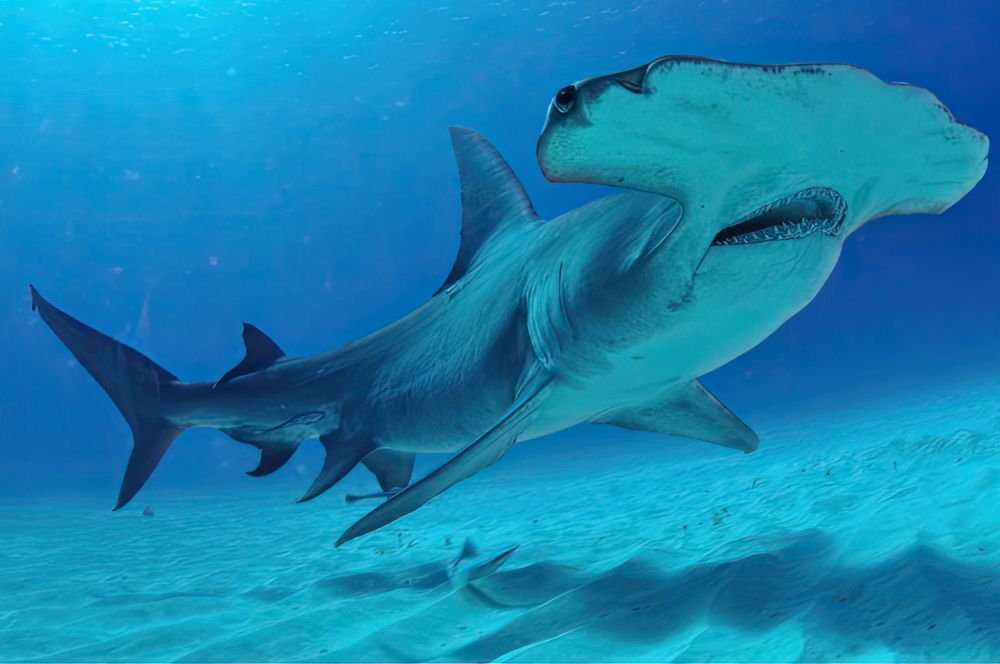
Hammerhead sharks stand out among the myriad of shark species due to their distinctive head shape. While other shark species have more streamlined heads, the hammerhead species possess a widened, flattened head known as the cephalofoil. This peculiar head shape is not just for show, as it offers these sharks several advantages that make them highly efficient predators in the ocean.
The two main benefits of the Hammerhead’s head shape are enhanced vision and sensory advantages. In the following subsections, we will delve deeper into these remarkable adaptations that set hammerhead sharks apart from their fellow ocean dwellers.
Enhanced Vision
The unique head shape of hammerhead sharks allows them to have an impressive 360-degree vision in the vertical plane. This means that they can constantly perceive what is located above, below, and behind them. In species like the great hammerhead, they can even enhance their stereoscopic vision by rotating their eyes and sweeping their head from side to side. This extraordinary vision capability sets them apart from most hammerhead species and other shark species, giving them a significant advantage when hunting their prey.
Apart from their exceptional field of vision, hammerhead sharks also have increased binocular vision and depth perception. This allows them to accurately judge distances and locate prey more effectively than other sharks, making them formidable hunters in the ocean.
Sensory Advantages
In addition to their extraordinary vision, hammerhead sharks possess highly specialized sensory organs known as the ampullae of Lorenzini. These electroreceptors enable them to detect the minute electrical pulses emitted by living creatures, including humans. This ability to sense electrical fields is common in most hammerhead species, including the smooth hammerhead, and it provides them with a significant advantage when searching for prey hidden in the ocean floor.
The combination of their unique head shape, enhanced vision, and sensory advantages makes hammerhead sharks highly efficient predators. These adaptations enable them to locate and catch their prey with remarkable precision, making them a true marvel of the ocean.
The Life Cycle of Hammerhead Sharks
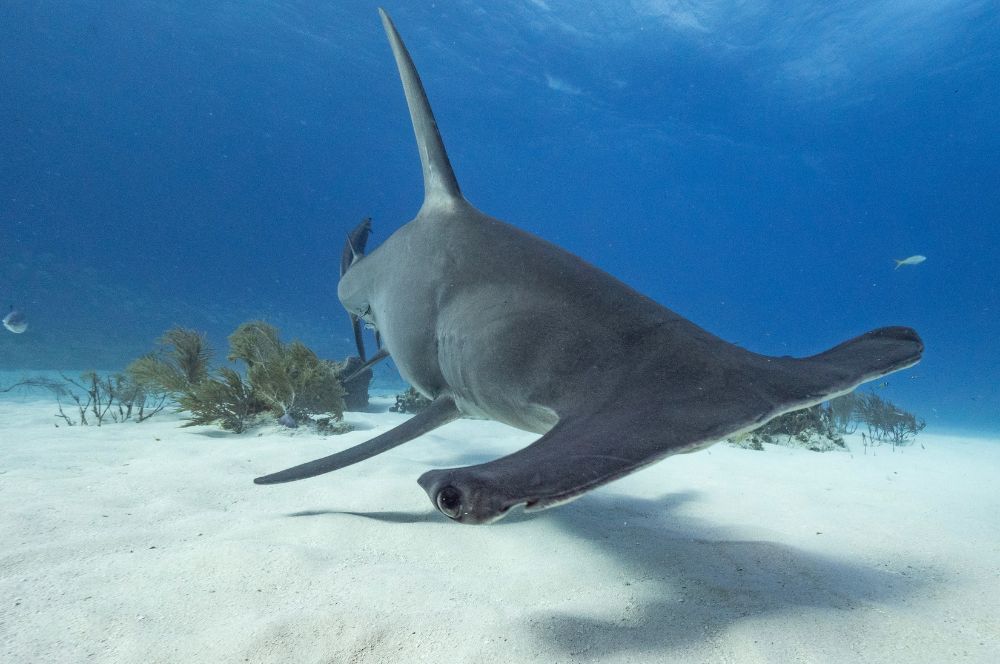
The life cycle of hammerhead sharks is another fascinating aspect of these incredible creatures. Here are some key points:
-
They have a lifespan of 25-35 years
-
They reproduce once a year, giving birth to live pups
-
This sets them apart from some other shark species that lay eggs instead
Hammerhead sharks are viviparous, meaning that they give birth to live young. The gestation period is approximately 10 to 12 months, and a female shark can have anywhere from 2 to 42 pups. Let’s explore more about their growth and reproductive process in the following subsections.
Lifespan and Growth
Hammerhead sharks are known to grow throughout their lives. The average lifespan of these sharks is between 25 and 35 years, although some species can live even longer. The maximum size that they can attain is an impressive 6 meters in length, making them one of the largest shark species in the ocean.
Their growth is not uniform across all hammerhead species, with some reaching maturity at different sizes and ages. However, it is generally accepted that most hammerhead sharks grow continuously throughout their lives, reaching their maximum size as they approach the end of their lifespan.
Reproduction and Offspring
The reproductive process of hammerhead sharks is quite intriguing and, at times, violent. Here is a step-by-step breakdown of the process.
-
The male shark engages in biting the female until she consents to mating.
-
Once mating is complete, the fertilization of the eggs occurs internally within the female’s body.
-
The female then gives birth to live young, with the number of pups varying depending on the species.
The pups of hammerhead sharks are born fully formed and ready to fend for themselves. There is no parental care provided by the mother or father once the pups are born. This independence from birth allows the young sharks to quickly adapt to their environment and start hunting for prey.
Hammerhead Shark Diet and Hunting Techniques
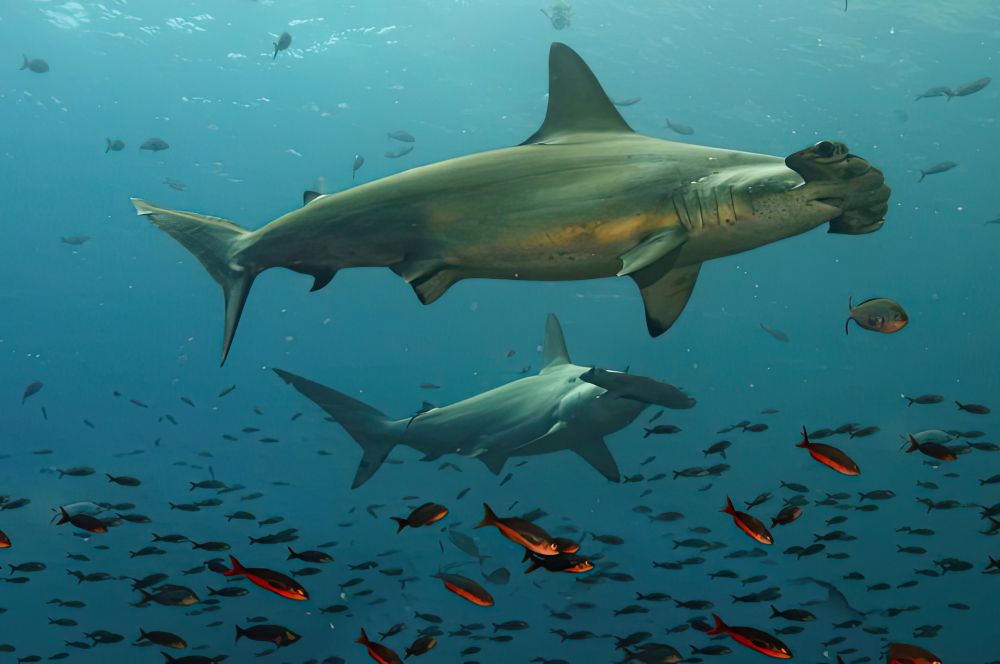
Hammerhead sharks have a diverse diet, which includes:
-
Stingrays
-
Fish
-
Octopus
-
Crustaceans
-
Other sharks
Their unique head shape and sensory advantages make them highly skilled hunters in the ocean.
In this section, we will delve deeper into their preferred prey and the hunting techniques they employ to catch their next meal. As mentioned earlier, the hammerhead shark’s head shape provides them with numerous advantages when hunting. In the following subsections, we will explore their preferred prey and how they utilize these advantages to efficiently hunt and capture their food.
Preferred Prey
Hammerhead sharks are known to consume a variety of prey, including:
-
Fish species
-
Squid
-
Crustaceans such as lobsters and eels
-
Other sharks
However, their preferred prey is the stingray. They have been observed using their distinctive head shape to capture and feed on stingrays, specifically targeting their wings.
The ability to detect electrical pulses from living organisms, coupled with their enhanced vision, allows hammerhead sharks to locate and capture their prey with remarkable precision. This makes them highly efficient predators, capable of consuming a diverse range of prey to sustain their large size and energy requirements.
Hunting Techniques
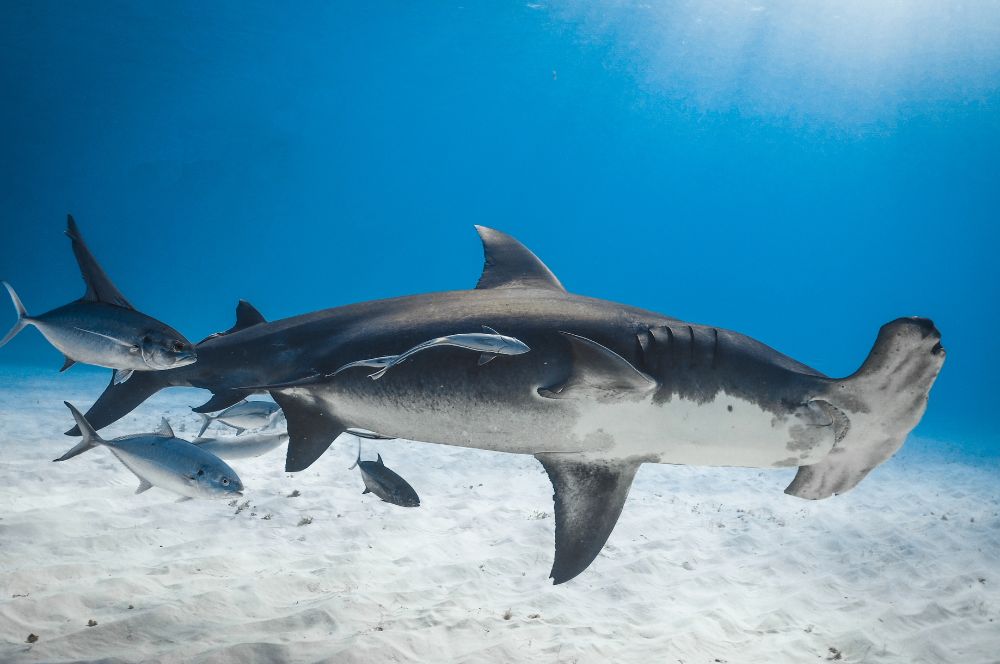
Hammerhead sharks, a species of requiem sharks, are known to hunt primarily at night, utilizing their specialized head shape to detect prey concealed on the sandy ocean floor. They are particularly adept at locating and capturing stingrays, which often bury themselves in the sand to avoid predators. The Hammerhead’s unique head shape and electroreceptors allow them to detect the buried stingrays and dig them out for a meal.
In addition to their nocturnal hunting, hammerhead sharks employ a variety of hunting techniques, including ambush, stalking, and cooperative hunting. These diverse techniques enable them to adapt to different situations and prey, making them formidable predators in the ocean.
Species of Hammerhead Sharks
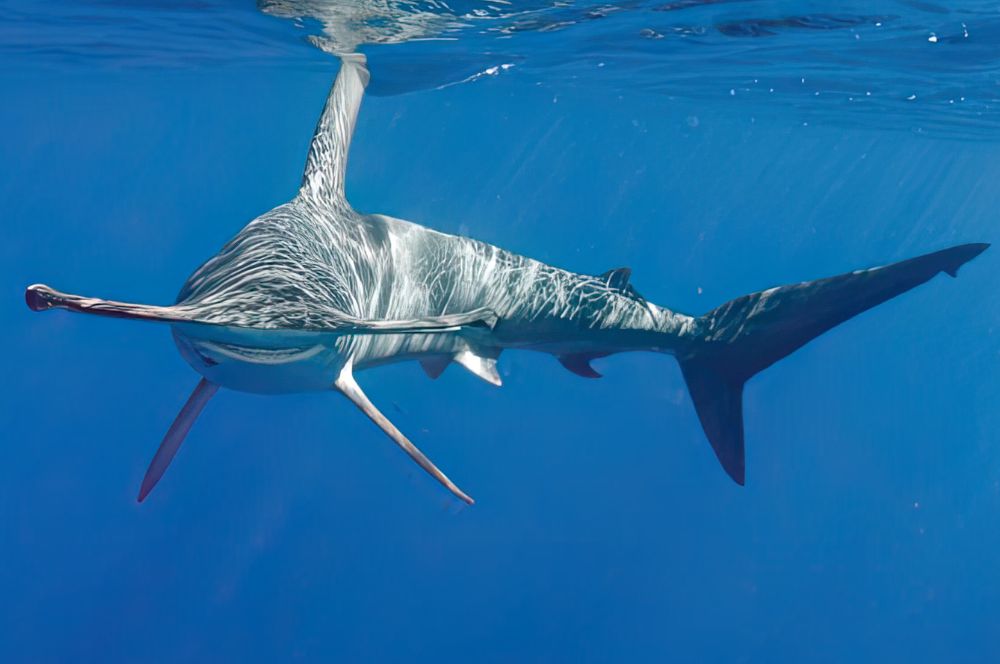
There are several species of hammerhead sharks, each with its unique characteristics and adaptations. In this section, we will explore three of the most well-known species: the great hammerhead, scalloped hammerhead, and smooth hammerhead. Each of these species has distinct features that set them apart from one another, making them fascinating subjects for study and observation.
Let us learn more about these incredible species and the differences that set them apart from one another in the following subsections.
Great Hammerhead
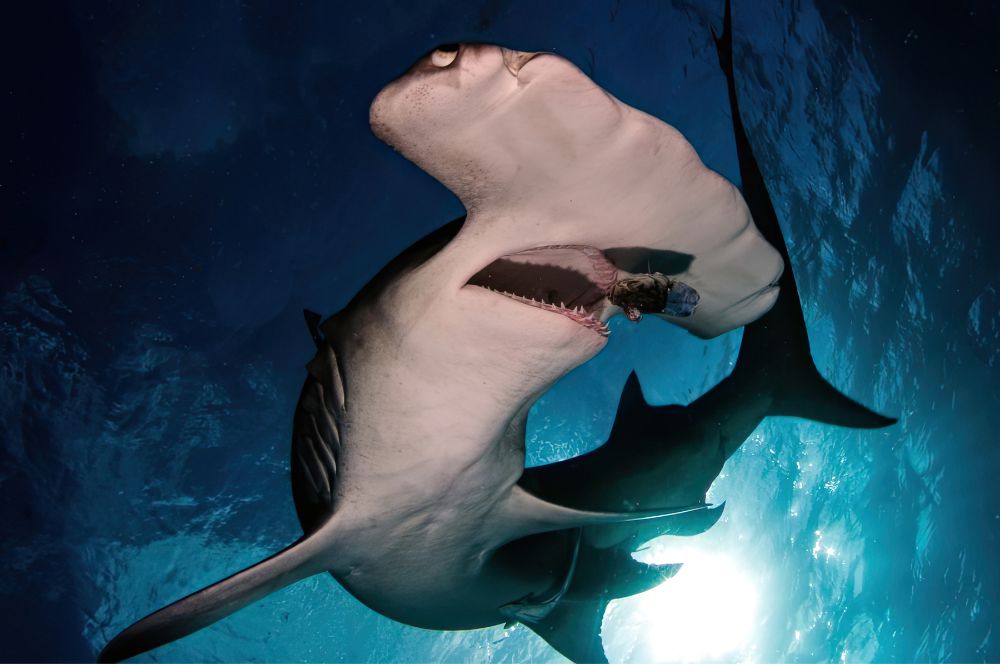
The great hammerhead is the largest species of hammerhead shark, reaching a maximum length of up to 6 meters. This species is distinguished by its large, flattened ‘hammer-like’ head with wide-set eyes and a very tall, distinctly sickle-shaped first dorsal fin. The great hammerhead shark is a common sight in many coastal areas, and it is not unusual to spot great hammerhead sharks in groups. They inhabit the continental shelves and adjacent drop-offs up to a depth of 80 meters.
In addition to its large size, the great hammerhead shark is known for:
-
Its unique hunting techniques
-
Its impressive predatory skills
-
Its sickle-shaped dorsal fin
-
Its powerful swimming abilities
These characteristics enable it to pursue prey at high speeds, making it a formidable predator in the ocean.
Scalloped Hammerhead
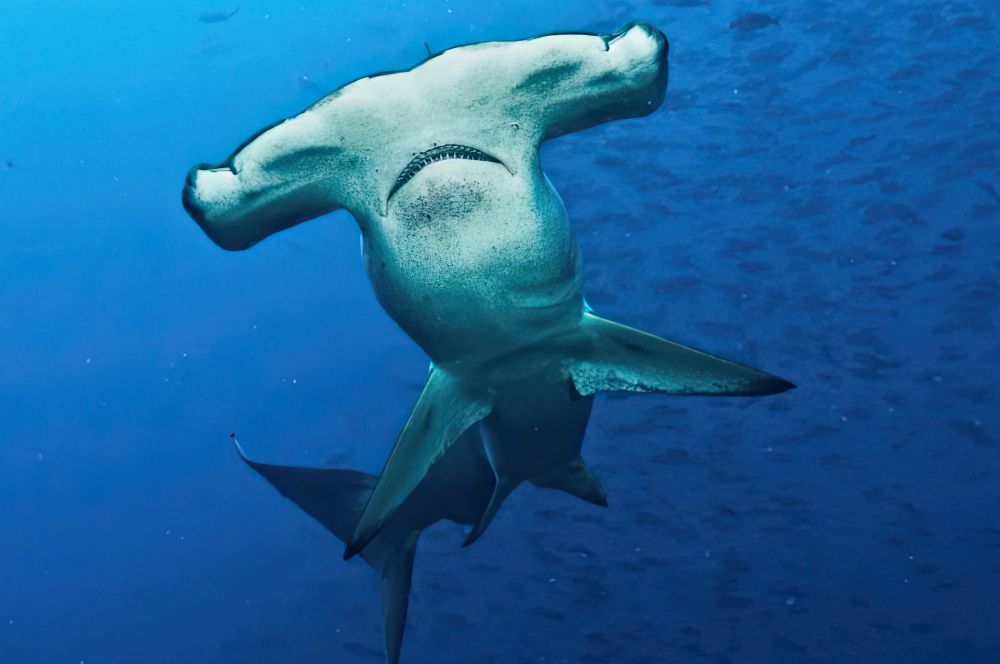
The scalloped hammerhead is another fascinating species of hammerhead shark. It can be distinguished by its large, flattened hammer-like head, wide-set eyes, and a prominent central scallop-like indentation. This species, known as scalloped hammerhead sharks, is known for its social behavior, as it often forms large schools for protection.
The scalloped hammerhead is a coastal-pelagic, semi-oceanic shark that inhabits continental and insular shelves as well as adjacent deep waters. The scalloped hammerhead is currently listed as “Conservation Dependent” due to the threats it faces from commercial fishing and the demand for its fins. Conservation efforts are in place to protect this species and ensure its survival in the wild.
Smooth Hammerhead
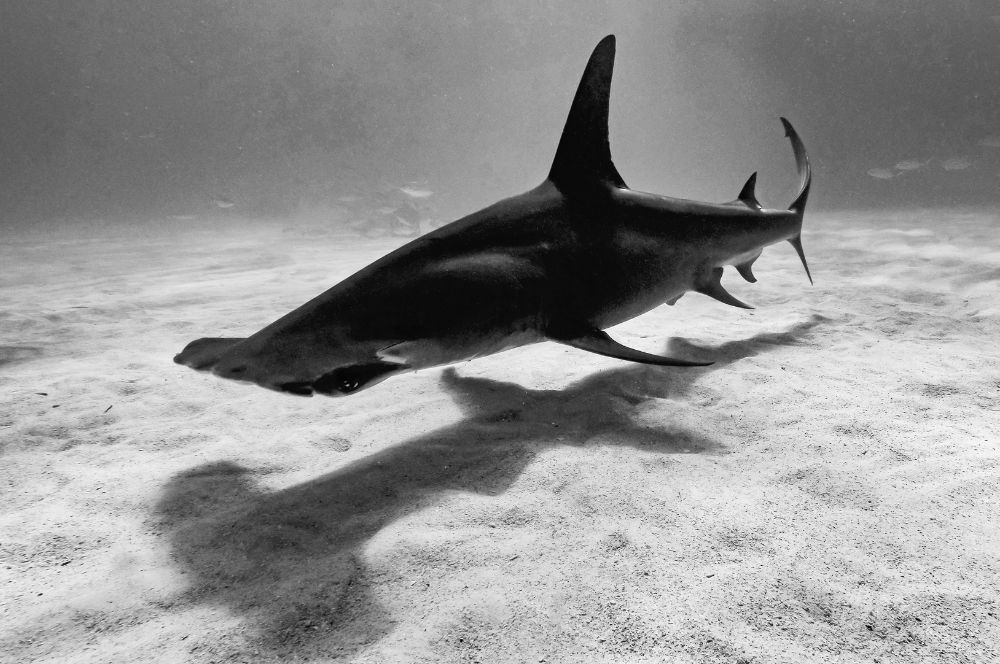
The smooth hammerhead is characterized by:
-
Distinctive flattened and laterally extended head, a feature common among smooth hammerheads
-
Gray-brown to olive-green colouration on top with off-white undersides
-
Heavily serrated triangular teeth
-
Very high first dorsal fin
It is similar in appearance to the great hammerheads and scalloped hammerheads, but has a more rounded head shape.
The smooth hammerhead:
-
Reproduces through internal fertilization
-
Gives birth to live young
-
Has an average length of 2.4 to 3.5 metres, with a maximum length of 5 metres
-
Can be found in coastal-pelagic and semi-oceanic areas
This species, the sphyrna mokarran, is a fascinating subject for study and observation.
Hammerhead Sharks and Human Interaction
Hammerhead sharks are fascinating creatures that share the ocean with humans. However, human interaction poses challenges to these magnificent animals, as they face threats from commercial fishing, shark culling, and the demand for their fins. On the other hand, attacks on humans by hammerhead sharks are rare, making them less of a threat to us than we are to them.
In this section, we will explore the conservation status of hammerhead sharks and the rarity of attacks on humans, providing a balanced perspective on our relationship with these incredible creatures.
Conservation Status
Hammerhead sharks are endangered due to commercial fishing, shark culling, and the demand for their fins as a delicacy. The IUCN has assessed great and scalloped hammerheads as critically endangered, highlighting the need for urgent conservation efforts to protect these species. Overfishing and the demand for their fins are the primary factors contributing to their endangered status.
Conservation efforts are in place to protect hammerhead sharks, such as adding them to Appendix II of the Convention on International Trade in Endangered Species of Wild Fauna and Flora (CITES), which enables the fishing and commerce of these species to be subject to licensing and regulation. Additionally, Non-Detriment Findings (NDFs) are decisions and reports made by the Federal Government based on information from an independent and objective scientific assessment of CITES-listed species.
Attacks on Humans
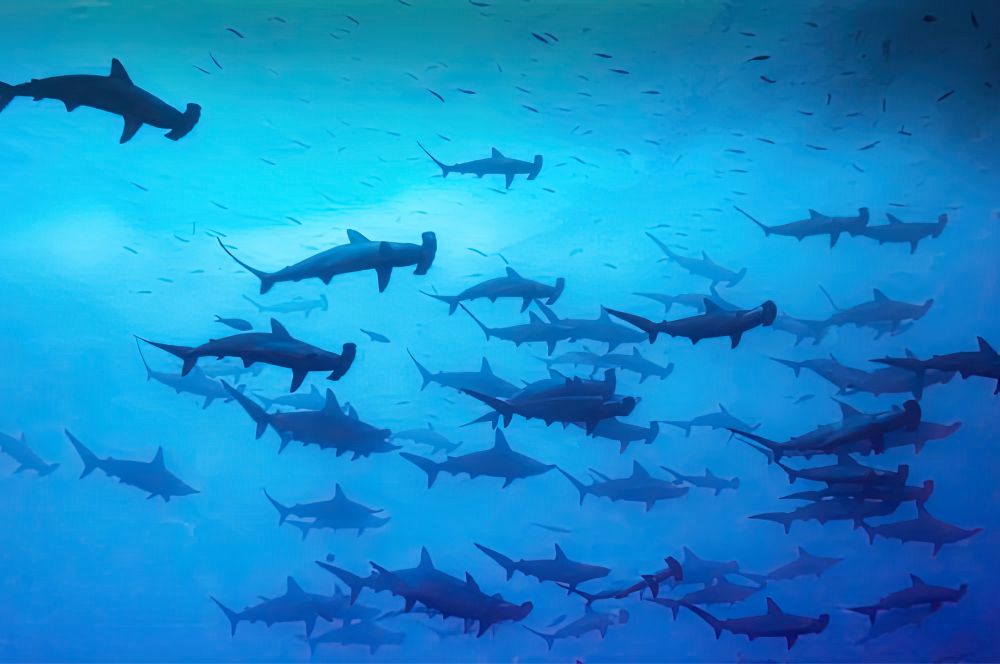
While hammerhead sharks are known for their unique head shape and impressive predatory skills, they are not considered a significant threat to humans. To date, only 16 human attacks by hammerhead sharks have been recorded, with no fatalities. This rarity of attacks highlights that hammerhead sharks are not as dangerous to humans as other shark species, such as great white sharks or tiger sharks.
It is essential to maintain a balanced perspective on our relationship with hammerhead sharks. While they may be formidable predators in the ocean, they pose little risk to humans. Instead, our focus should be on protecting these magnificent creatures from the threats they face due to human interaction and ensuring their survival in the wild.
Hammerhead Sharks in Captivity
Keeping hammerhead sharks in captivity presents numerous challenges due to their size and specialized requirements. These sharks require very large, specially adapted tanks to accommodate their unique head shape and swimming patterns. As a result, only a few public aquariums worldwide have managed to maintain hammerhead sharks in captivity successfully.
Understanding the difficulties of keeping hammerhead sharks in captivity highlights the importance of conserving their natural habitats and ensuring their survival in the wild. By focusing on conservation efforts and protecting these incredible creatures, we can continue to marvel at their unique adaptations and appreciate their beauty in their natural environment.
Cultural Significance of Hammerhead Sharks
Hammerhead sharks hold cultural significance for some communities around the world. For example, the Torres Strait Islanders consider hammerhead sharks as family totems and incorporate them into ceremonial dances. This cultural connection showcases the deep respect and admiration that some communities have for these incredible creatures, further emphasising the importance of conserving their populations and protecting their natural habitats.
The conservation of hammerhead sharks is essential for the preservation of their unique cultural significance and the protection of sharks.
Summary
Throughout this fascinating journey into the world of hammerhead sharks, we have explored their unique head shape, life cycle, hunting techniques, various species, interactions with humans, and cultural significance. These incredible creatures continue to captivate and intrigue us with their remarkable adaptations and formidable predatory skills.
As ocean lovers, it is our responsibility to protect these magnificent creatures and ensure their survival in the wild. By focusing on conservation efforts and raising awareness about the threats they face, we can help preserve the beauty and wonder of hammerhead sharks for future generations to admire and appreciate.
Frequently Asked Questions
Has a hammerhead ever attacked a human?
Although there have been documented cases of hammerhead sharks attacking humans since AD 1580, none of these attacks have resulted in any fatalities.
Do hammerhead sharks live in Australia?
Yes, hammerhead sharks are found throughout the seas around northern Australia, down to Sydney in the south. They make up the family Sphyrnidae and have suffered serious declines due to overfishing for their meat and fins.
The hammerhead shark is a unique species, with its distinctive head shape and large eyes. It is an apex predator, meaning it is at the top of the food chain and has no natural habitat.
Can you eat hammerhead fish?
Humans often eat the meat of hammerhead sharks; however, consumers should be aware of the potential for high levels of mercury and pollutants. Additionally, fins, skin, and teeth can also be harvested from hammerhead sharks, with many larger specimens being prized as sport fish.
Therefore, you can eat hammerhead fish.
What is the unique head shape of hammerhead sharks called?
The distinctive head shape of hammerhead sharks is known as the cephalofoil.
What is the primary diet of hammerhead sharks?
Hammerhead sharks primarily feed on stingrays, fish, octopus, crustaceans, and other sharks.
RELATED POSTS
-
Uncovering the Mysteries of Horned…
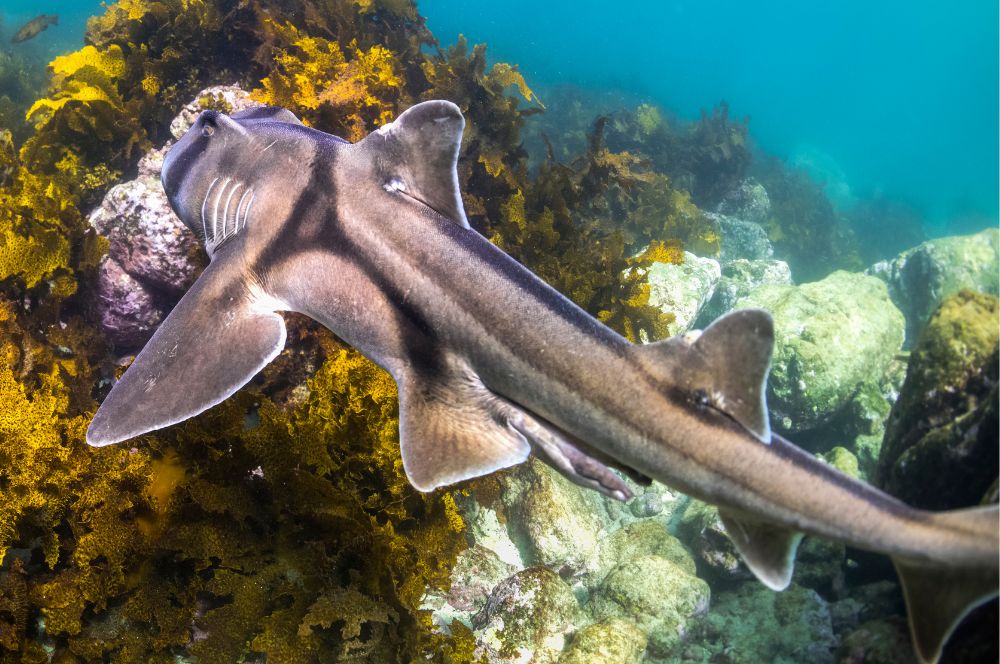
Uncovering the Mysteries…
Uncovering the Mysteries of Horned Sharks: The Port Jackson and Crested Hornshark If you're looking for a […] -
Uncovering the Mystery of Bushrangers…
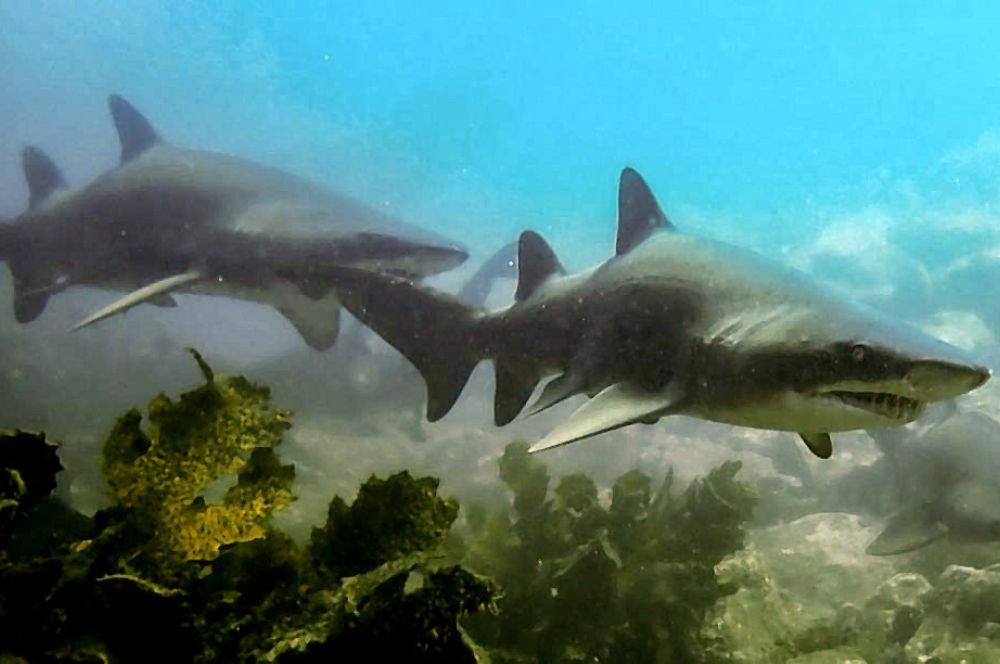
Uncovering the Mystery…
Uncovering the Mystery of Bushrangers Bay's Grey Nurse Shark Aggregation Ever wanted to get up close and […] -
Why do We Need Save Sharks Species…
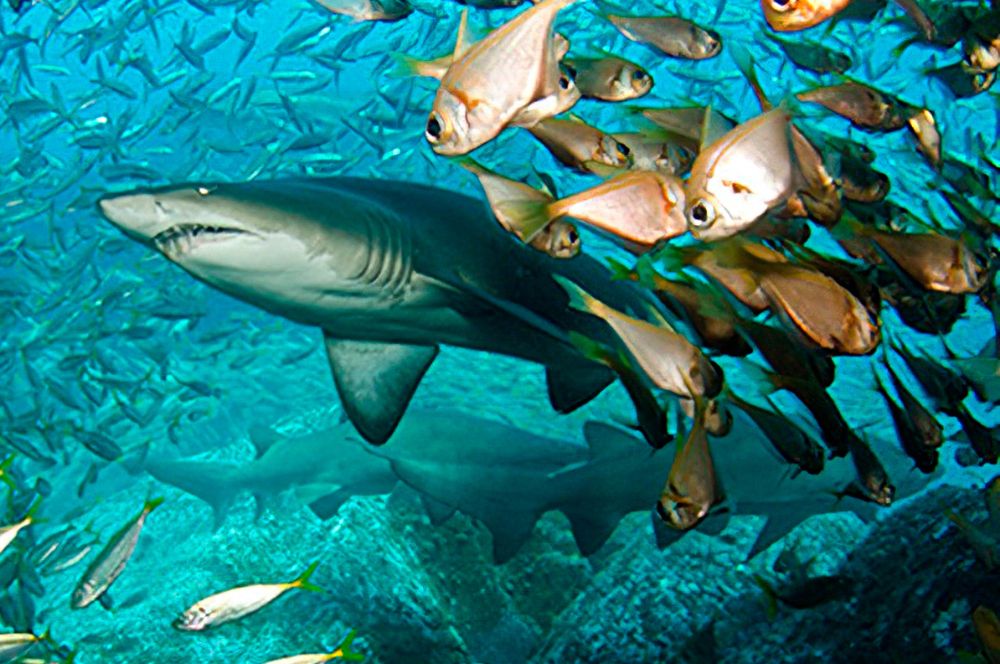
Why do We Need Save…
Why do We Need Save Sharks Species for Our Marine Ecosystem? Scuba divers have an intimate understanding […] -
Funny Shark Facts You Never Knew
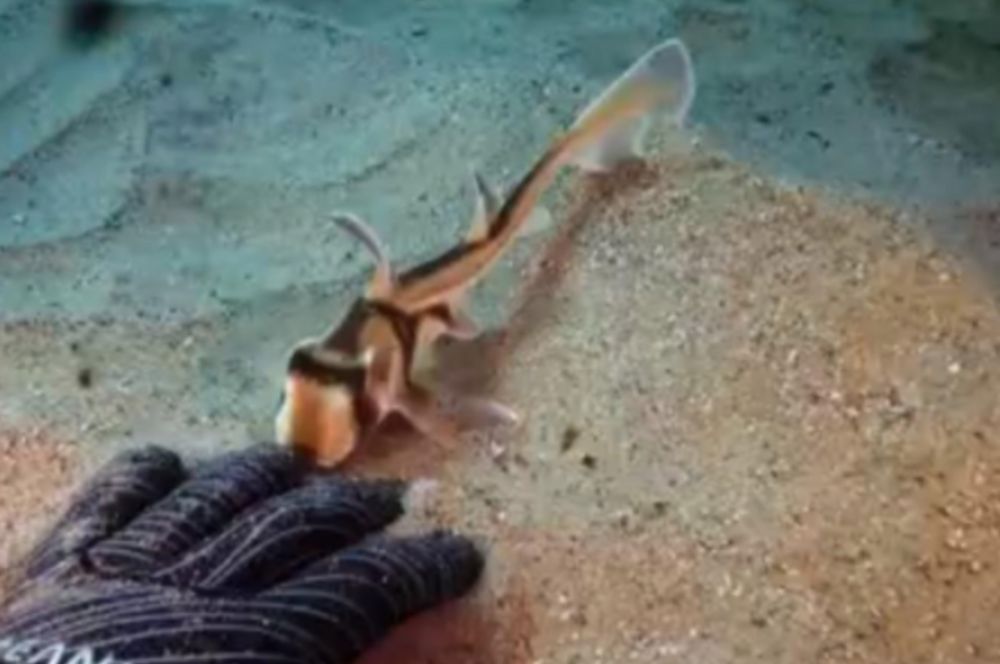
Funny Shark Facts You…
Jawsome Laughs: Funny Shark Facts You Never Knew! Sure, sharks are often portrayed as terrifying creatures […]
Recent Posts





